Phototype
Overview
Phototype was developed for a study into the use of personal photos to stimulate serendipitous reminiscing in everyday life. Simply put, Phototype is a photo viewer that turns a Raspberry Pi 3 into a digital photo frame, with interactive features so it’s not ‘just another photo frame.’ This was in response to the idea that people capture and store an ever-increasing amount of photos, but afterwards do very little with them. If, instead, an interactive photo frame could use that photo library to stimulate occasional remembering, we would get more value out of our old photos. This was the core tenet in my PhD thesis within the Materialising Memories program.
Coming soon: edited video of phototype in action, showing its features
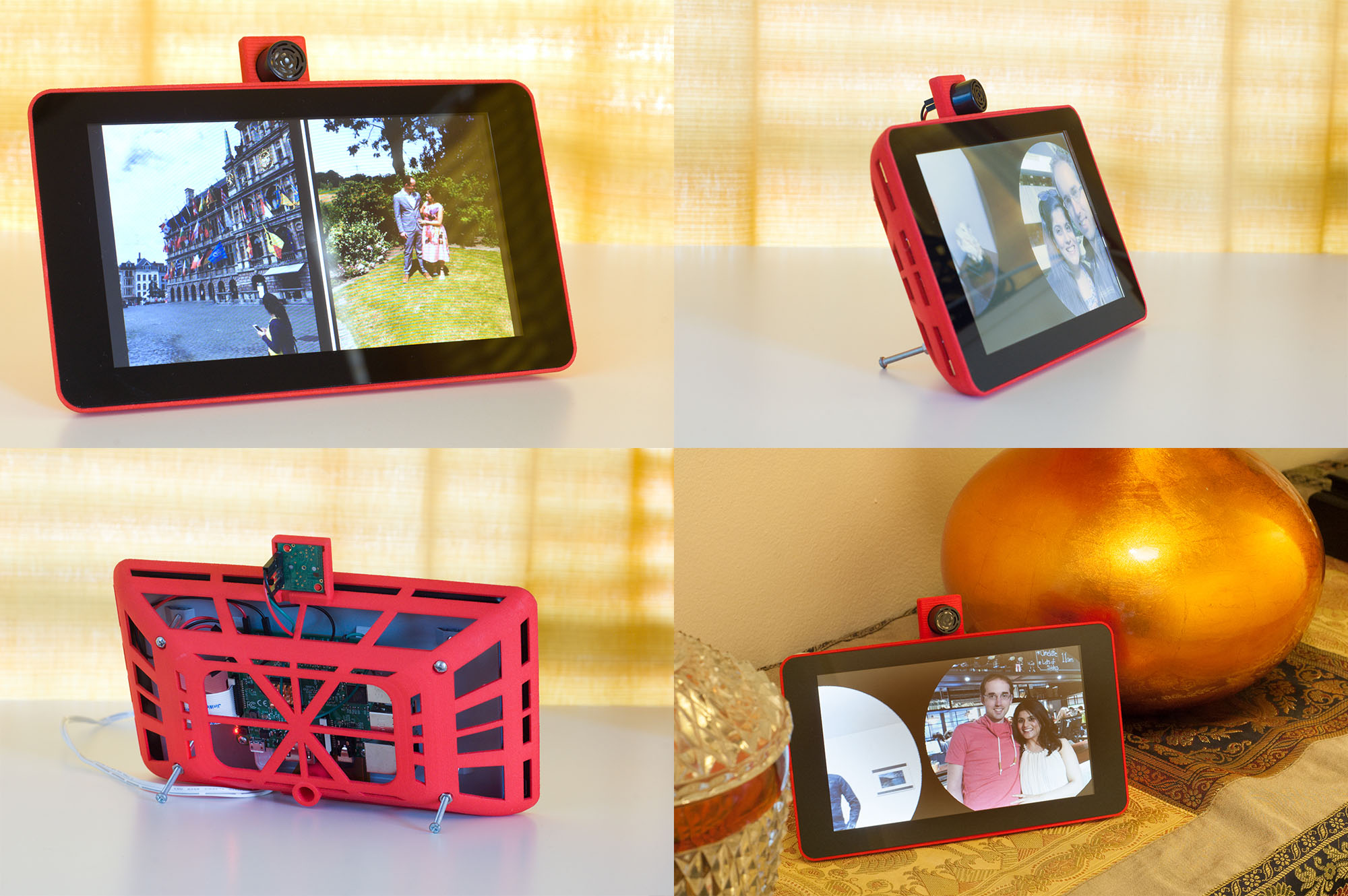
Phototype was deployed in the homes of 14 participants for several weeks, and its deployments bookended with interviews. The interview and log data were used to see if and how people appreciated Phototype and its features, as well as the broader experience of seeing their digital photos displayed at home.
Our findings show that:
- Phototype’s interactive features were used less often than we had expected.
- Instead, its value lies in the ability to see personal photos in everyday life without the need for initial actions (for example, having to open the photos app on your phone first).
- This non-interactive use also highlights the importance of the photo selection and uploading process itself because, while it’s considered a dreadful task, it’s a clear proxy for the later enjoyment of Phototype.
Concept development
Phototype was created as part of my PhD thesis work on serendipitous reminiscing in everyday life. I wanted to study how we could use our existing digital media, and the memories associated with them, to gain wellbeing benefits in the present. For this, I looked into cognitive memory theory and distributed ecology of the mind, among other influences.
Key is that remembering is constructive: everytime you remember something, the memory is constructed again based on what’s brought to mind, and that may vary from one instance to another. Thus external factors certainly influence the (seemingly internal) remembering process. And if external factors do so, the design of such external factors (think products, memorabilia, and technology around us) would also influence remembering. I derived five factors in a simplified model of remembering-in-context that should influence the remembering process and that are also relevant factors in the design of things (whatever those may be, although I focused primarily on interactive photo displays).

Ideation process
Using the factors mentioned earlier, I ideated and evaluated several concepts that could initiate serendipitous encounters with digital photos. The use of tangible mock-ups allowed me to study people’s perceptions towards such technology.
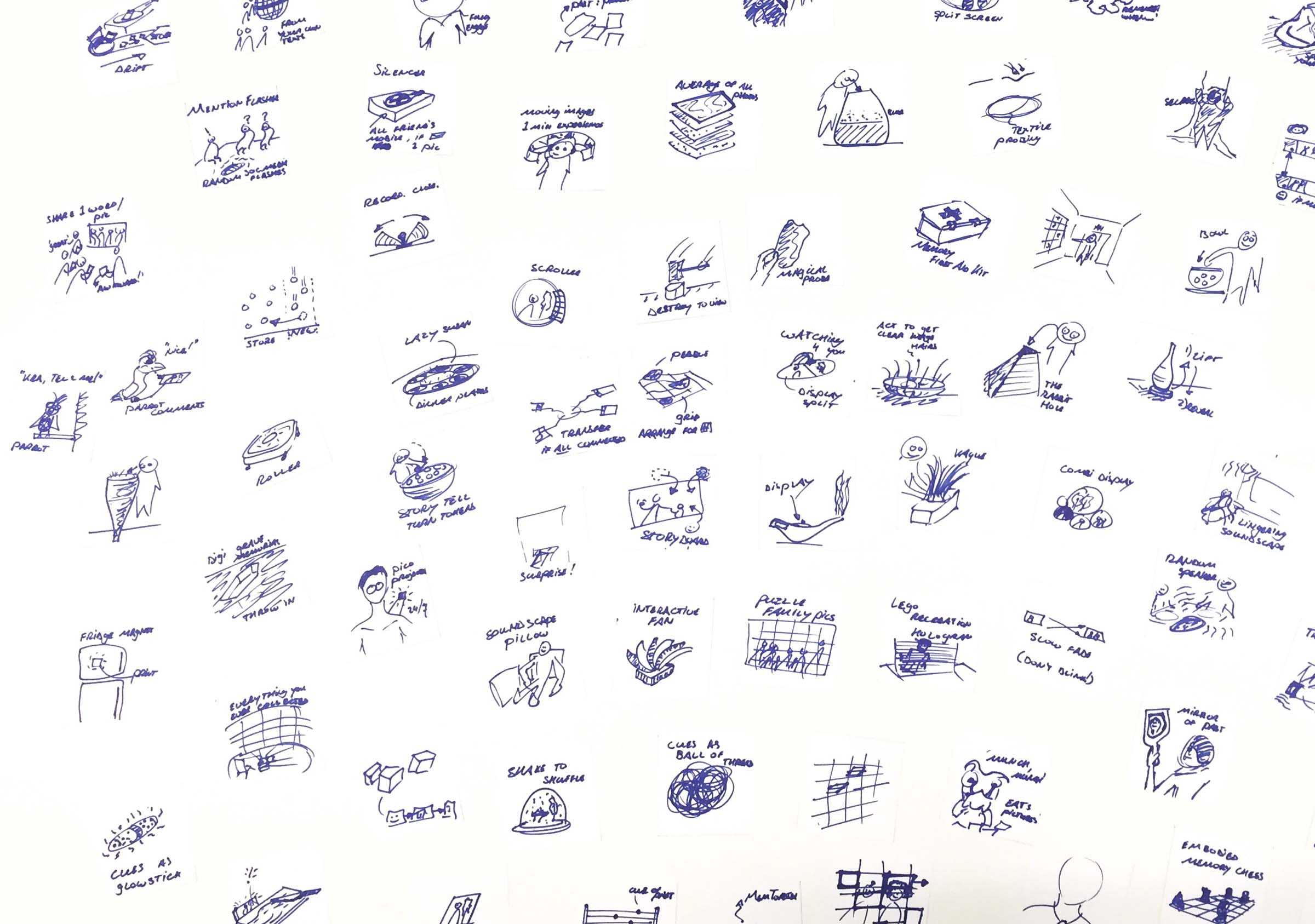
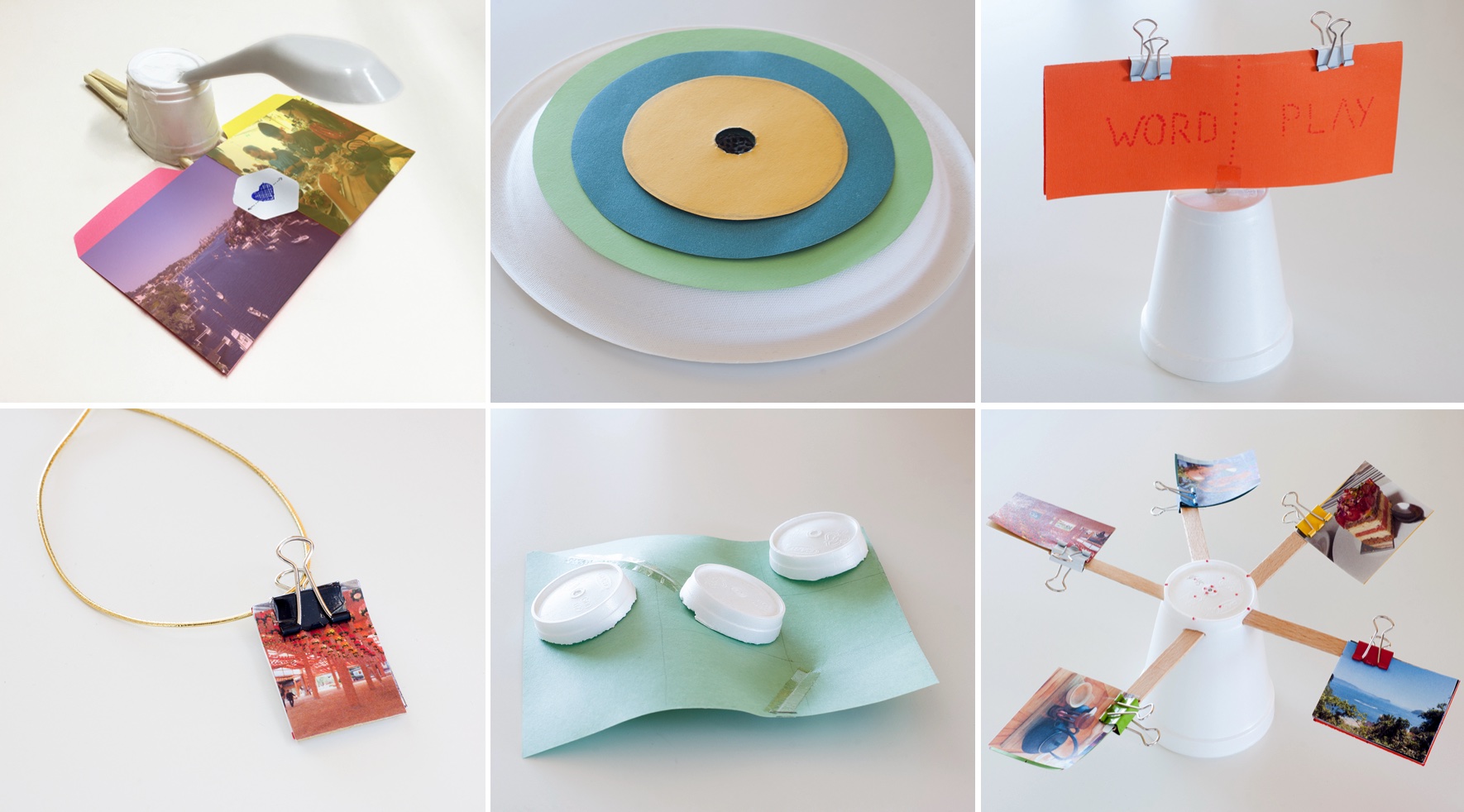
A first study with ten participants, using the mock-ups as conversation starters, led us to conclude that a good design offers:
- Agency and control over photos shown;
- Flexibility to changing attitudes over time or across different social situations;
- A non-interactive viewing experience, so it’s useful without the need to interact with it first.
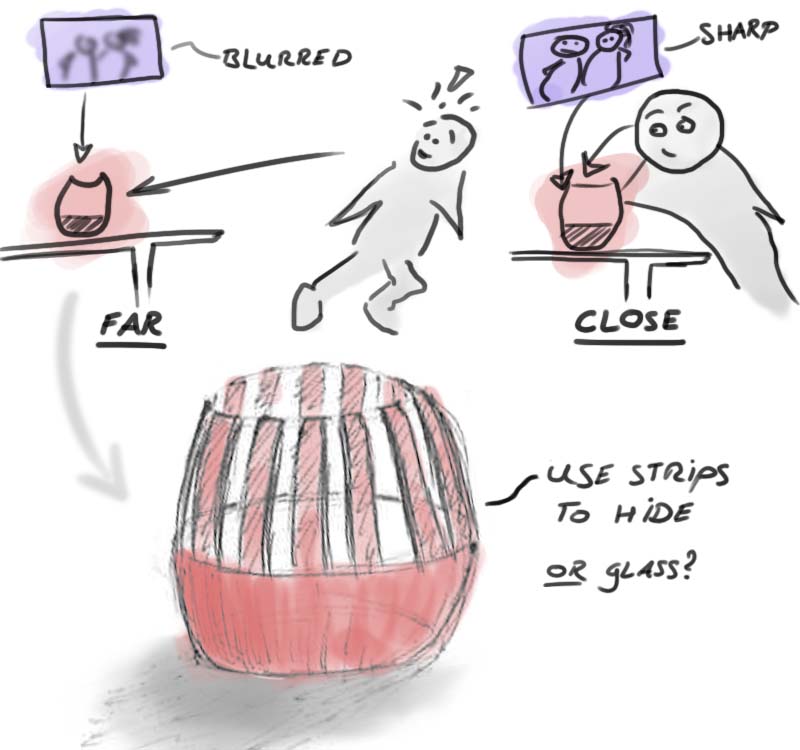
Building Phototype
I used the insights from the mock-ups to design an interactive photo viewer prototype, dubbed Phototype (bet you didn’t see that name coming). Phototype was deployed in the homes of 14 participants to see how interactive technology could inspire serendipitous reminiscing in everyday environments like the home.

Upon installing the device at a participant’s home, I helped them set up the device by connecting to WiFi and showing them how they could upload photos to the device via its built-in web server. After that, photos start appearing on the device.
Code
Phototype’s code was developed in python. All code and associated files to build your own Phototype is available as open source via the Phototype repository on GitHub.
Analysis & data visualisation
The interview data was analysed with qualitative methods, using interviewees’ comments as the basis for finding themes of interest. Phototype also logged interactions with the device, which I visualised with Processing as shown below.
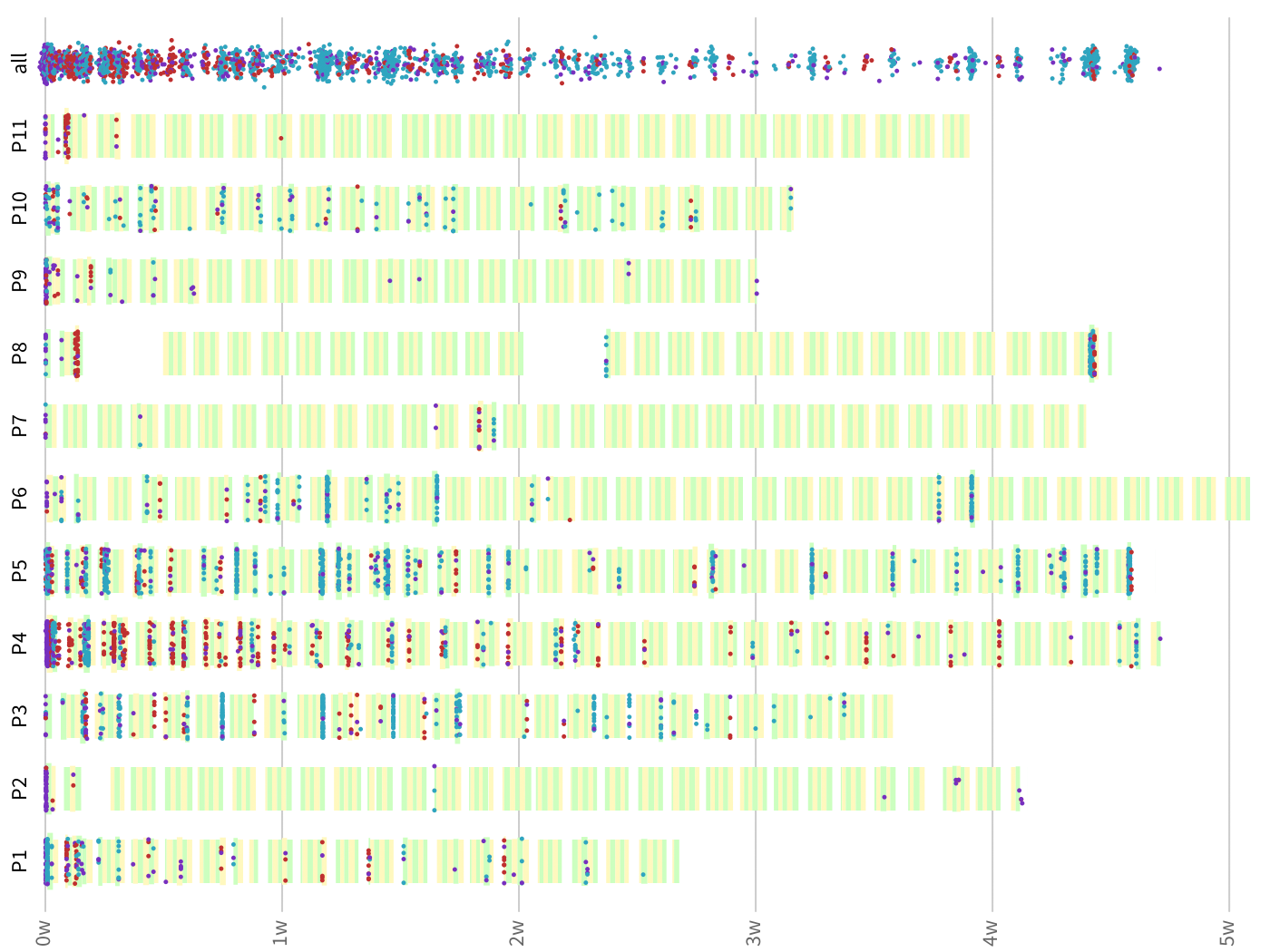
Conclusions
My thesis was quite a bit more wordy than I’ll get into here, but the quoted paragraphs below summarise the insights gained from deploying Phototype:
People face an over-abundance of digital photos as the costs of capturing and storage have come down. Yet, the desire and ease to archive and curate these ever-growing collections has not kept in step with the volume, such that digital photos may be under-appreciated. Thus, people may appreciate more frequent encounters with personal photos otherwise left unseen. Across the studies, the display of personal photos was perceived in a positive light. Initial responses to photo display mock-ups were ambivalent, but when deployed, our participants told of moments where the photos prompted them to consider their past.
The value of a photo display lies in the ability to enable people to have casual encounters with evidence of their past, such that people gain a positive experience. These encounters may happen in serendipitous fashion, via more deliberate interactions, or without the need for prior user intervention. Showing photos is not the goal; it is a means to elicit encounters with personal media that inspire someone to appreciate their past and reminisce. Therefore, the design of interactive photo displays ought to focus on the elicitation of meaning. The meaning invested in and the meaning taken from things relative to their context is what counts to influence serendipity and reminiscing.
For photo displays to succeed at influencing people and inspiring reminiscing, the answer lies with the photos shown. While acquiring the ‘right’ photos is primarily a user-led endeavour, designers of interactive systems may strive to help people get the most out of their device. A system can suggest or otherwise cater to a good balance of its source material. Namely, a good mix of familiar, meaningful images together with some unfamiliar, perhaps forgotten photos that could be meaningful goes a long way to ensure the presence of an interactive photo display is making a valuable contribution to the domestic environment. Conversely, photo displays may not work well without some attention devoted to prior curation.
This study, and the thesis it contributed to, was supervised by Prof Elise van den Hoven and Prof Panos Markopoulos. I received further suggestions and encouragement from the Materialising Memories team members.
